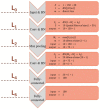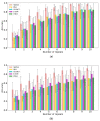The MindGomoku: An Online P300 BCI Game Based on Bayesian Deep Learning
- PMID: 33668950
- PMCID: PMC7956207
- DOI: 10.3390/s21051613
The MindGomoku: An Online P300 BCI Game Based on Bayesian Deep Learning
Abstract
In addition to helping develop products that aid the disabled, brain-computer interface (BCI) technology can also become a modality of entertainment for all people. However, most BCI games cannot be widely promoted due to the poor control performance or because they easily cause fatigue. In this paper, we propose a P300 brain-computer-interface game (MindGomoku) to explore a feasible and natural way to play games by using electroencephalogram (EEG) signals in a practical environment. The novelty of this research is reflected in integrating the characteristics of game rules and the BCI system when designing BCI games and paradigms. Moreover, a simplified Bayesian convolutional neural network (SBCNN) algorithm is introduced to achieve high accuracy on limited training samples. To prove the reliability of the proposed algorithm and system control, 10 subjects were selected to participate in two online control experiments. The experimental results showed that all subjects successfully completed the game control with an average accuracy of 90.7% and played the MindGomoku an average of more than 11 min. These findings fully demonstrate the stability and effectiveness of the proposed system. This BCI system not only provides a form of entertainment for users, particularly the disabled, but also provides more possibilities for games.
Keywords: BCI game; Bayesian deep learning; P300; brain–computer interface (BCI); electroencephalogram (EEG).
Conflict of interest statement
The author declares no conflict of interest.
Figures








References
-
- Coyle S., Ward T., Markham C. Brain–Computer Interfaces: A Review. Interdiscip. Sci. Rev. 2003;28:112–118. doi: 10.1179/030801803225005102. - DOI
MeSH terms
LinkOut - more resources
Full Text Sources
Other Literature Sources
Miscellaneous

